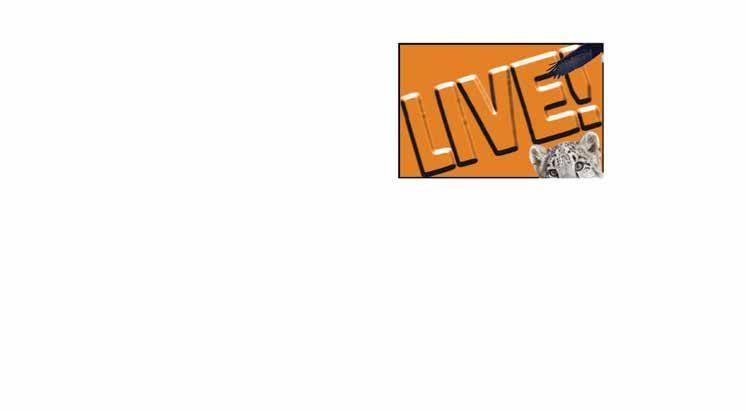
6 minute read
Music
from February 26, 2020
by Ithaca Times
Using a predominantly subtractive approach, Greenwald begins his black-andwhite solarplates by first inking the polymer surface and then working into it with a variety of unconventional implements such as (according to a statement) “sticks, twigs, chopsticks, pencils, and rags.”
While these may appear, on a quick perusal of the gallery, to be much of the same, careful attention reveals rich variation, as well as a number of standout pieces. In “Opportunity,” a central square is silhouetted against a black background, with grass-like white scribbles vying against an overall middle-gray hum. Similarly, “Clarity through Chaos” features a grimy yet luminous central block palpably worked out of the usual calligraphic scrim. In the unusually serene “Wormhole,” the lines—elsewhere often more assertive and script-like—assume the texture of fine threads or hairs. In contrast, an untitled piece is notable for the asphalt-like roughness of the inked areas as well as the angular buzz of its linework.
Advertisement
Other solarplates such as “Containment” and “Scissor Trap II” are done in a more traditional black-on-white with similarly engaging individual results. The effect is still richer exhibit-wide, helping establish a rhythm between works and sending the eyes jumping around the gallery. A lovely, smaller color solarplate builds-up a fine mesh of coppery brown and olive green with little flickers of paperwhite.
Greenwald worked with Welden last summer to create a series of unique color prints, combining solarplate with monotype. Suggesting the painterly numerical grids of Alfred Jensen and Jasper Johns wedded to the scribbly abstraction of Cy Twombly, these are uncomfortably dense and raw, even to those of us well-accustomed to expressionism and abstraction. Thick lines of black, teal, mustard, oceanic green, bright red, and violet obscure the numeral grid in “quiet House.” More compellingly, in “tread ground” the numbers assume a more active role, creating a shimmering interference effect against the luminous purples and magentas and the pale yellow. Elsewhere, the scrawls assume hints of child-like writing—further emphasizing the sense of primitive sounding evoked throughout the show.
“Omega!,” a larger piece, combines monotype with watercolor hand-painting. It is perhaps the most coloristically nuanced pieces here as well as one of the most animate: a Pollock-like skein of vibrating color-threads against a steady but not impassive purple-gray background.
The suggestion of clarity through chaos is one of extensive, layered looking—of finding beauty in apparent sloppiness, order in apparent mess, meaning in apparent nonsense. It’s a recommendation ably embodied in Greenwald’s best work here. These remind us that like art-making at its most sophisticated, careful looking is a skill, as well as a labor of love. As the art critic Jed Perl once aphorized, in a memorable essay on “The Art of Seeing,” “to look long is to feel free.”
Music Inside The Machine
Legendary Pink Floyd cover band climbs the wall By Bryan VanCampen T he Machine (Joe Pascarell, guitar, lead vocals; Tahrah Cohen, drums; Dylan Kelehan, bass and vocals; Scott Chasolen, keys, vocals) is one of the oldest U.S. Pink Floyd tribute bands. They will return to the State Theatre for the third time in four years. In 2017, they performed The Dark Side of the Moon, and for their 30th anniversary in 2018, the band played a Floyd triple bill: Wish You Were Here, Animals and The Dark Side of the Moon. This year, they’ll play The Wall in honor of the 40th anniversary of what many consider to be the last original Pink Floyd album; the 1979 two-disc concept album was the band’s most ambitious to date, a song cycle detailing the tale of a WWII orphan who rockets to rock n’ roll stardom. There have been several live recordings and a 1982 film directed by Alan Parker.
Joe Pascarell spoke to the Ithaca Times about the band’s ambitious plans for their show at the State Theatre on Saturday, Feb. 29.
Ithaca Times: The Wall is such a huge piece, with orchestra and choir parts. How do you incorporate all that with a four-piece band like The Machine?
Joe Pascarell: Some of it demands a rearrangement, obviously, right? But not as much as you would think. The biggest demand, obviously, is “The Trial,” at the end. It’s mostly all orchestra. So we did an arrangement for a four-piece band. And I’ll tell you what happens. We’ve been playing our arrangement for a long time, so we’re very comfortable with it. But that particular song is so theatrical, and I think we sing it really well. And when you hear us doing it, you don’t even notice that there’s no orchestra, because you’re hearing the song and the theatrical aspects of it.
IT: The band is amazing, by the way. Tahrah Cohen is a powerhouse.
JP: She’s a musician, and you can’t say that about a lot of drummers. [laughs] I will pass that along, she’ll appreciate that. IT: The Wall is my favorite album personally, to listen to and to play. And I will say too that singing The Wall is by far the hardest thing to do. I mean, emotionally. [Singer Roger Waters] goes from a whisper to a scream, and back and forth the whole time. And it’s very cathartic and it’s very enjoyable and it’s very difficult. It’s all those things.
JP: I have to tell you, playing the threealbum show is difficult because it’s a lot to do, it’s a lot of music. And The Wall is a 90-minute show and the three-album show is well over two hours. But I will tell you, when The Wall’s finished, I am twice as exhausted. It’s the emotionality of it.
IT: It’s pretty epic. You can’t just toss it off.
JP: No, you can’t. It’s pedal to the metal. You can’t do that because it’s not that type of music. At least I can’t. IT: I was in my junior year of high school when the album came out, and we were all huge Floyd fans. Where were you?
JP: I think I was in what should have been my senior year in high school, which I really wasn’t going to by that point. I’m a high school dropout. But I remember waiting outside in front of the local store because I was friendly with the owners, and they told me they were getting the shipment of the new Pink Floyd album that day, and I was there when it came in, and I got the first one out of the box. How much of a geek am I? That is a true story.
TICKETS: 105WestStateStreet • (607) 277-8283• www.stateofithaca.org JACKHANNA’S INTO
WILD P R E S E N T E D B Y COMMUNITY SERIESPRESENTS 7:00PM FRIDAY,MARCH13 th STATETHEATREOFITHACA THE THE




















